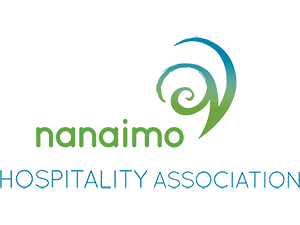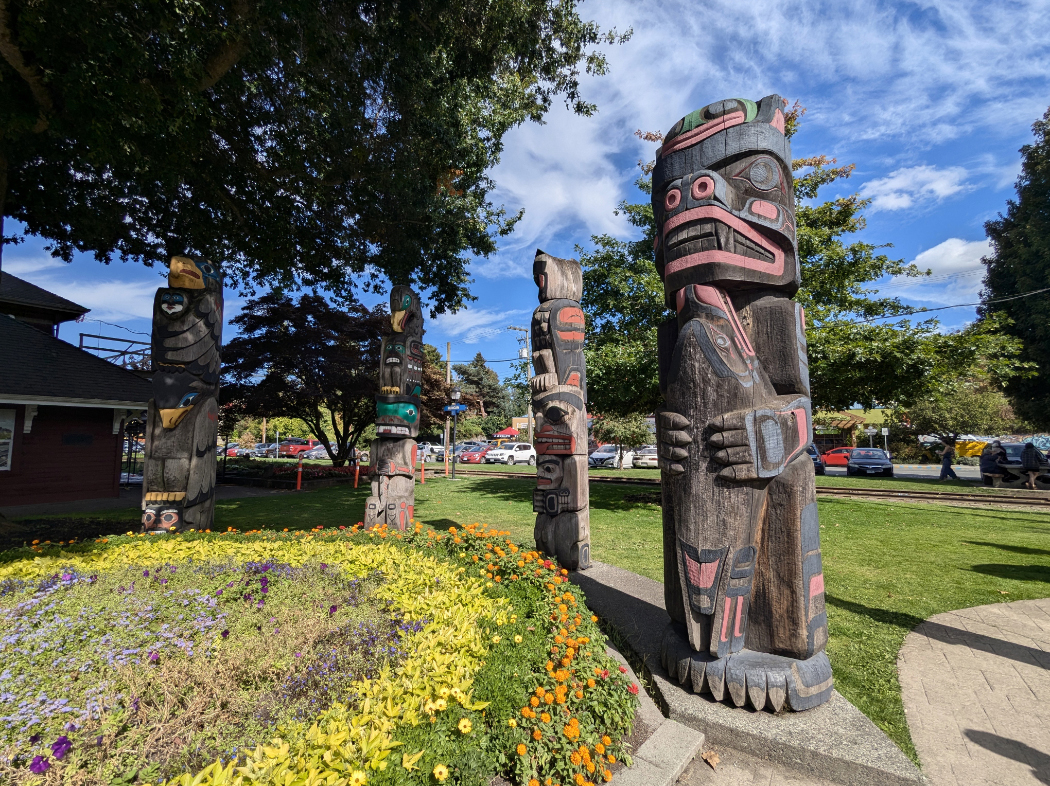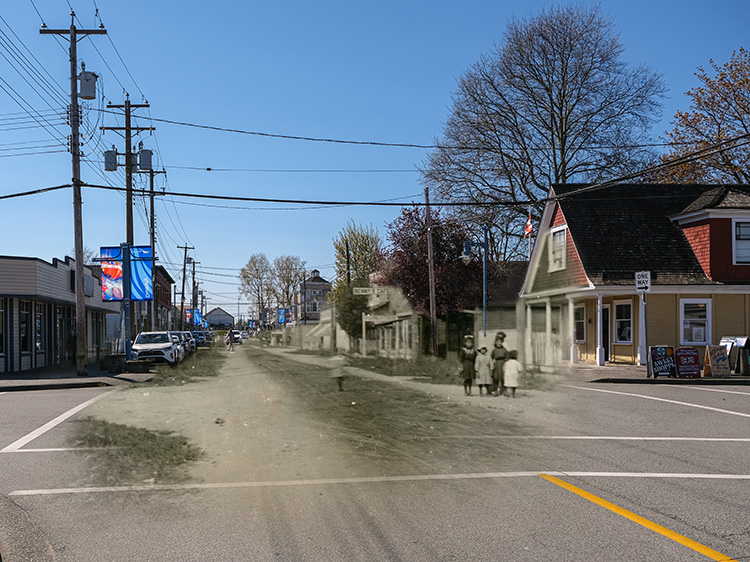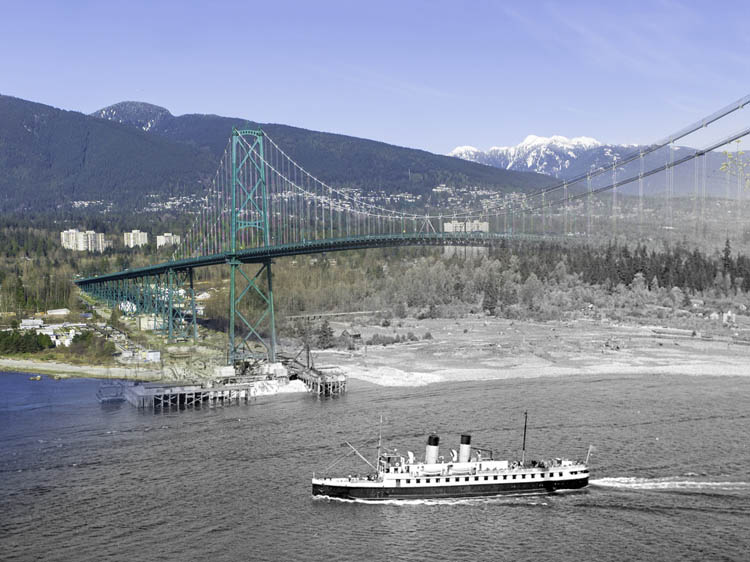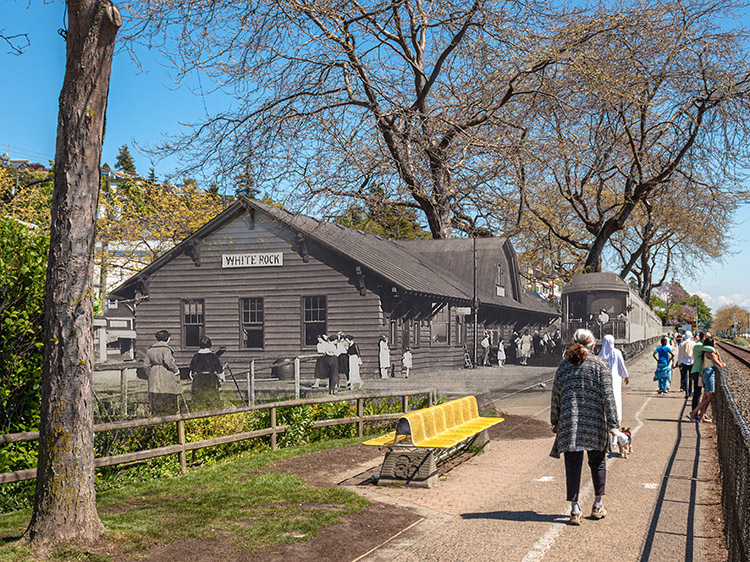Walking Tour
The Village of Stiil’nep
Ancient Stories of Departure Bay
Presented by Dave Bodaly
Departure Bay is a sacred place to the Snuneymuxw, and was once the site of one of their largest villages, known as Stiil’nep. Before European contact the village ran from today's Kinsmen Park along the waterfront to Hammond Bay Road at the end of Departure Bay Beach. In this gripping tour, Snuneymuxw elder and knowledgekeepr Dave Bodaly shares the history of Stiil’nep, and teaches us about the culture and lifestyles of the people who once called it home. Along the way we'll learn about Dave's own fascinating family history, and his deep ties to this place.
Tour Route
This tour is a short walk along Departure Bay Beach. You are encouraged to take time along the way to stop and listen to the crash of the waves, the calls of the seagulls, and reflect upon the experience of the Snuneymuxw people who lived and thrived on this spot for many thousands of years.
This project is possible with the generous support of the Nanaimo Hospitality Association and the Petroglyph Development Group of the Snuneymuxw First Nation. We would also like to thank the Nanaimo Archives and Nanaimo Museum for use of their historic photo collections and providing research assistance.
1. Welcome to Stiil’nep
Dave welcomes you to the Village of Stiil’nep, and explains the origins of the modern name of Nanaimo.
2. The Village Beneath your Feet
You're standing before the Kin Hut. When it was built an archaeological excavation was conducted of the site, which led to the discovery of a cedar basket from the village of Stiil'nep that was over 1,000 years old.
3. The Spirit Portal
The Spirit Portal you see here features two yuxwule' (eagles) on the pillars, and is mounted by a œullhánumucun (orca).
4. The Great Potlatch
Dave tells you the story of his great-grandfather's marriage potlatch, which was held in the great longhouse of Stiil'nep. The remarkable potlatch in the summer of 1900 lasted a whole month, and the marriage brought peace between the Kwakwaka'wakw people to the north, and the Coast Salish peoples of the Salish Sea.
5. Growing in the Grass
Dave explains the medical properties and cultural significance of some of the grasses growing right in this field.
6. The Crow Transformer
Dave shares the transformer story of how the crow, or œulé:œe’ (pronounced Kel-a-Ka), or crow, got their black feathers.
7. All Kinds of Canoes
This beach was once filled with canoes of all shapes and sizes. The Salish Sea was the highway of the Coast Salish, and they built a dizzying variety of specialized cedar dugout canoes. Each band had its own distinctive style. One surviving example is 22 metres (75 feet) long.
8. Moving With the Seasons
The Snuneymuxw lifestyle was deeply attuned to their environment and the great natural abundance it contained. Many of them would move between village sites seasonally, partially dismantling their longhouses and moving them by canoe in order to reuse the wood.
9. Where the Snuneymuxw Live
The Snuneymuxw are a Coast Salish people, one of three major First Nations cultures on Vancouver Island. The Snuneymuxw had and continue to have close ties to other Coast Salish peoples across the region. Many Snuneymuxw today live all around the Salish Sea, including on the mainland as far south as Seattle.
10. Hul'q'umi'num'
The language of the Coast Salish is Hul'q'umi'num', and over the millennia many dialects and sub-dialects have formed, creating wonderful linguistic diversity. Dave explains just how minute these regional variations can be.
11. Teaching Hul'q'umi'num'
Dave explains how Hul'q'umi'num' came to be taught in some schools, helping reintroduce Snuneymuxw children to this fundamental aspect of their culture and identity. The revival of Hul'q'umi'num' is a remarkable achievement after a century where it was brought to the brink of extinction by residential schools and hostile government policies.
12. The Next Generation
Dave talks about the Snuneymuxw baby boom in the 1980s and 90s, helping their population rebound and creating new millennial and zoomer generations of confident young Snuneymuxw who are reengaging with their culture.



